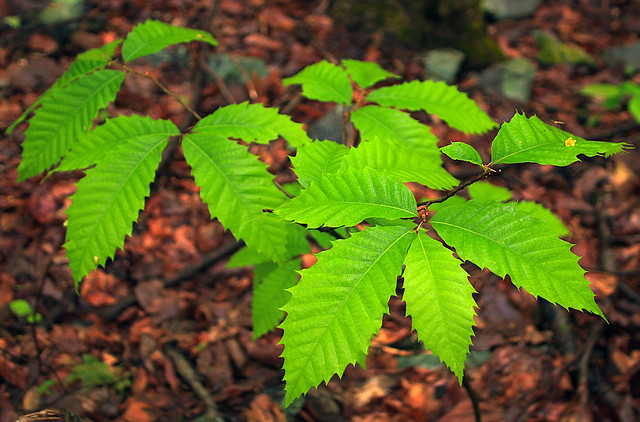Read Our Blogs
The American Chestnut Chronicles Part 1
Shared by Shanique Wilson, as Guest Blogger.
As a volunteer and crewmember in Americorps at Virginia State Parks, most of my time is filled with giving my crew a helping hand for trestle building projects, cleaning up storm debris, or trail maintenance, basically physically demanding work. But something changed that directed my attention to the American Chestnut and its role in the history of Virginia.
What made the American Chestnut tree legendary
Historically, the American Chestnut tree could grow up 98 feet tall and made up one fourth of the northeastern forests. They were able to make up so much of the forests due to their large annual seed drop and the tree’s ability to rapidly grow. The large seed drop not only fed animals and humans alike, but it also returned nutrients to the soil, which helped other plants and microorganisms grow.
It was also pretty essential to American life back then because of the tree’s straight-grained wood. The American Chestnut’s wood was fairly easy to saw and split yet remained strong enough to be used for a variety of things, such as furniture or housing. Not only were they strong, but also they contained a tannic acid that made the wood highly resistant to rotting. It’s no wonder why so many people and species were dependent on the American Chestnut.

"Saw-Toothed" The American Chestnut sapling (Photo Courtesy of Nicolas A Tonelll Creative Commons License)
There was once a time when it wasn’t uncommon for a home to be made of chestnut, the cabin able to last even after years of harsh winters and unbearable summers. It remained sturdy, the wood only creaked slightly from the current autumn breeze, the naturally dimming sun allowing just enough light in as the smell of chestnuts roasting drifted from the house to the noses of young children playing outside
Good to eat
Excited, the children rushed into the forest, empty sacks dragging along the ground, certainty and determination in their eyes. They knew there’d be more chestnuts, there always were dozens upon dozens of them littering the forest floor, ready to be picked up for a feast later that night or a small snack for those brave enough to eat it raw. They bent down, carefully grabbing a handful from the ground, laughing as the burs gently pricked into the palm of their hands. With the help of a stick, only because they were still too young to carry around a pocketknife, they plucked the actual nut from the prickly coat. It took the better part of the day, but their sacks, though covered in dirt, were filled quickly with the nutty treat.
The mighty American Chestnut
In the distance, the whir of a crosscut saw echoed as several men worked together to cut down a giant of a chestnut tree. It would take them several days to cut the tree into the pieces they would need, but the effort would soon be worth it. From the one mighty chestnut tree, they’d be able to get several pieces of furniture (a table, a few chairs, even an entire fence) and it wasn’t out of the realm of possibilities to have enough remaining lumber to build a new cabin for a family. No one even imagined a day when the American Chestnut would not rule the surrounding forests.
The downfall of the American Chestnut
The time did eventually come when the American Chestnut was no longer viable. The reason? Well, you will just have to come back to read my next blog article in this series about the downfall of this iconic tree...
If you have read the article and have a question, please email nancy.heltman@dcr.virginia.gov.
Search for blogs
By Park
Categories
Cabins
Camping
Fishing
History and Culture
Other
Programs and Events
Trails
Volunteers
Water Fun
Archive
2025
2024
2023
2022
2021
2020
2019
2018
2017
2016
2015
2014
2012














